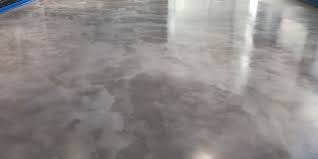
Micro Topping Flooring: A Sustainable Solution for Modern Architecture
In the ever-evolving world of architecture, sustainability has become a central focus. Designers and builders are constantly seeking materials that not only offer aesthetic appeal but also contribute to environmental consciousness. Micro topping flooring has emerged as a sustainable solution, offering a unique blend of style and eco-friendliness. This article delves into the sustainable aspects of MicroTopping Flooring, exploring how it aligns with the principles of modern architecture.
The Sustainable Essence of Micro Topping
1. Reduced Environmental Impact
Micro topping, often composed of cement, polymers, and other eco-friendly additives, minimizes its environmental footprint compared to traditional flooring materials. Its thin application layer reduces the overall volume of material used, resulting in less waste during both production and installation.
2. Adaptability to Existing Surfaces
One of the key sustainability features of micro topping is its ability to be applied over existing surfaces. This eliminates the need for extensive demolition or removal of pre-existing materials, reducing construction-related waste and the associated environmental impact. The adaptability of micro topping makes it an excellent choice for eco-conscious renovation projects.
Micro Topping and Energy Efficiency
1. Reflectivity and Thermal Benefits
Micro topping flooring often exhibits reflective properties, bouncing natural light and reducing the need for artificial lighting. This not only creates a brighter, more inviting space but also contributes to energy savings. Additionally, the material’s thermal resistance can play a role in maintaining comfortable indoor temperatures, further enhancing energy efficiency.
2. Cool Roof Effect
In outdoor applications, such as rooftops or exterior surfaces, micro topping can contribute to the “cool roof” effect. Its light-reflective surface helps mitigate the urban heat island effect, where built-up areas experience higher temperatures than their rural surroundings. This sustainable feature aids in reducing energy consumption for cooling in warmer climates.
Micro Topping in Construction: A Greener Choice
1. Low VOC Emissions
Volatile Organic Compounds (VOCs) are chemicals that can have adverse effects on indoor air quality. Micro topping formulations often have low VOC emissions, promoting healthier indoor environments. This aligns with the growing demand for construction materials that prioritize occupant well-being.
2. Longevity and Durability
Micro topping’s durability contributes to its sustainability profile. Its robust composition ensures a longer lifespan than some traditional flooring materials, reducing the frequency of replacements and minimizing the associated resource consumption. This longevity makes micro topping a sustainable investment in the context of the circular economy.
Design Versatility Meets Sustainability
1. Customization for Unique Spaces
Micro topping’s sustainability does not compromise its design versatility. Architects and designers can leverage its adaptability to create unique, customized spaces. From mimicking natural materials to experimenting with colors and patterns, micro topping allows for endless design possibilities while maintaining a commitment to sustainable practices.
2. Minimalism and Sustainable Aesthetics
The minimalist aesthetic often associated with modern architecture aligns seamlessly with micro topping flooring. Its sleek and seamless finish contributes to the simplicity and elegance sought in contemporary design. This synergy between sustainability and aesthetics makes micro topping a preferred choice for architects striving to create visually appealing yet environmentally conscious spaces.
Challenges and Considerations
1. Energy Intensive Production
While micro topping offers sustainability benefits in application and longevity, it’s essential to acknowledge that the production of cement, a primary component, is energy-intensive. Exploring eco-friendly alternatives or incorporating recycled materials into formulations can mitigate this aspect and further enhance the sustainable profile of micro topping.
2. Local Sourcing and Manufacturing
To minimize the environmental impact associated with transportation, sourcing materials locally and opting for manufacturers with eco-friendly practices can be crucial. This consideration aligns with the broader sustainability trend of supporting local industries and reducing the carbon footprint of construction materials.
Conclusion:
Micro topping flooring stands as a testament to the evolving landscape of sustainable design within modern architecture. Its eco-friendly composition, adaptability, and energy-efficient properties make it a compelling choice for architects, designers, and environmentally conscious homeowners. As the demand for sustainable building practices continues to rise, micro topping flooring emerges as a sustainable solution that not only meets the aesthetic expectations of modern architecture but also aligns with the broader goals of creating a greener, more sustainable built environment.
micro topping flooring exemplifies how sustainable practices can seamlessly integrate into the world of modern architecture. As designers and builders strive to strike a balance between aesthetics and environmental responsibility, micro topping flooring stands as a shining example of how innovation can contribute to a more sustainable and visually captivating future.


